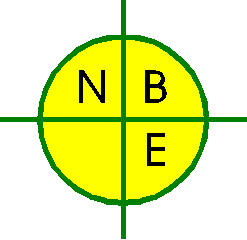Nelson Bros Engineering(360)236-1644sales@millsmart.com
Booth 490 |
Wow. Last year was actually GOOD
NBE finally gets to slew the band mills on
a lineally scanned sharp chain!Yes, we have talked about it for a long
time, now we have to deliver.
Sharp chains have always been the simplest way to
breakdown small logs.Load, turn, set bands, impale and say goodbye.But
in the never-ending quest for speed and recovery, the simple sharp chain
has evolved into high priced, high maintenance monsters that have double
length, articulating infeeds, multiple scanners and chip heads.Some mills
cannot justify the cost.
Our system keeps all the simplicity, while increasing
the piece count and recovery.Loading is faster since the operator does
not have to set the offset and taper nor select the cant size.Now, the
operator just loads, rotates, and impales.The scanner/optimizer determines
the band mill positions for the best combination of cant size and sideboards.And
if optimum decision requires a taper different than straight, we can do
it by slewing the bands in the cut (donít try this at home).Anyway, thatís
the dream.
We are also going to Scan the Dark Side on a
Carriage Headrig.Historically, headrig scanners would only scan the
front side of the log and attempt minimum opening faces.This would guarantee
a usable first board, reveal the grade to the operator and preserve the
most wood to be used on the back side.We like to call it the Dark Side,
since it does not get scanned, and too little is know about it.On smaller
logs or logs with no potential for grade improvement, this scanning method
pushes all excess to the back, thus guaranteeing that wood is wasted on
the back side.
Adding backside scanners gets the data needed to
make best whole-log decision.Offset, taper and cant selection can be made
prior to the first cut.If significant value improvement is possible at
another rotation, the operator is notified.If the operator sees grade potential
he can still select the conventional methods of opening and cutting the
log.
Numerous new applications and improvements
are planned for the JS-20 scan heads.Expect the standalone enforcer,
a transverse scanner and the optimizer in a box to name a few.
For more information, the experts will be in booth
490 at the Portland Show, March 19-21, 2003.
Rod Nelson, Nelson Bros Engineering
Date:2/21/03
